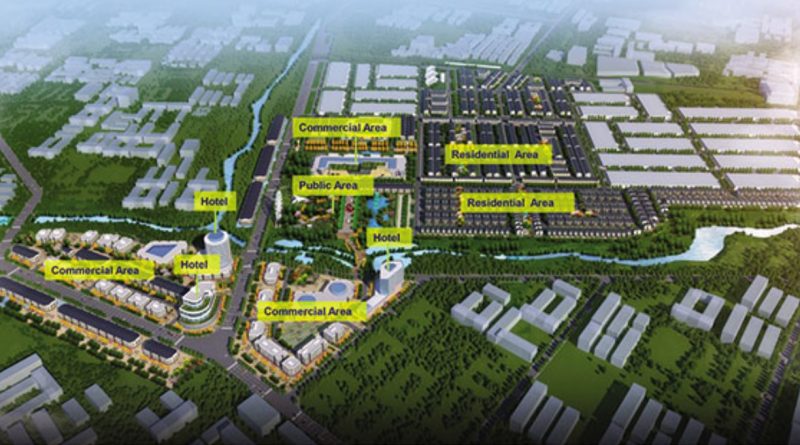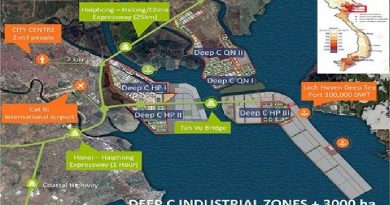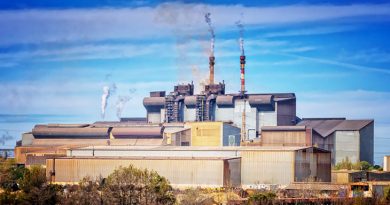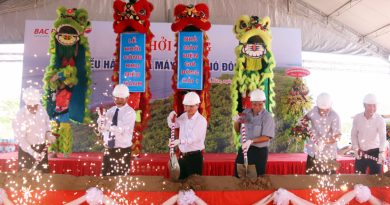VSIP goes far beyond industrial parks
VSIP has developed world-class industrial estates across Vietnam with self-contained facilities to serve the needs of its customers. John Lim HM, head of Commercial & Residential Properties at VSIP JV Co., Ltd., shared with Thanh Van the group’s vision to complement foreign investors’ growth in the park.
Following the success of industrial parks (IPs), VSIP has transformed into a developer of integrated townships and IPs. Could you highlight the advantages and challenges of this business model?
Vietnam is a land of immense potential for growth. We realised early on that the country possesses unique strengths, including abundant land and young, hardworking labour force, to attract
international investment. VSIP was therefore established to attract foreign direct investment (FDI) to the country, to help Vietnam recognise its immense manufacturing potential, to create employment opportunities, and to attract diversified sectors and industries to the country through products and services that meet international standards.
As Vietnam grows, the community’s needs to evolve. This is why VSIP has transformed our core offering from standalone IPs to integrated township and IP models, enabling us to bring in comprehensive solutions to work, live, and play, and also applying urban planning best principles in Vietnam. We believe that successful implementation rests on a strong master plan that is backed by robust urban infrastructure and integrates utilities and facilities for enhanced living.
Who are the target investors for VSIP commercial and residential complexes?
VSIP has a lot to offer as an investment destination. Along with IPs, VSIP townships in Binh Duong, Quang Ngai, Nghe An, Bac Ninh, and Haiphong are ideally located and prepared land for property investment and development with diverse options of townhouses, apartments, hotels, commercial areas, schools, and hospitals.
With modern master plans that integrate the work, live, play, and learn elements at areas outside of the city centres, we have been able to offer our customers solutions that meet their operating needs.
 |
| The planning of the commercial and residential area of VSIP II Expansion in Binh Duong |
 |
| The planning of the commercial and residential area of VSIP Haiphong |
What are your recommendations for foreign investors looking into the Vietnamese real estate market?
While much attention is paid to big cities such as Ho Chi Minh, Hanoi, and Danang, where typical formal offers are high due to high entry costs, less noticed are the surrounding cities and provinces which have huge housing and entertainment demand. Although there is a large supply in residential real estate, almost always targeting the affluent segment, a lot of mid-income households find it difficult to find suitable housing in first-tier or even in second or third-tier cities.
According to the 2016 Vietnam Landed Property Spotlight from Savills Vietnam, the expansion of the affluent class outpaces the middle-income segment, while the number of affluent Vietnamese households (annual income over $20,000) is expected to double from 250,000 in 2016 to 530,000 in 2020. The number of middle-income households with annual incomes ranging from $9,000-20,000 is estimated to increase by half, from 3.16 million to 4.83 million over the same period.
In the north, Haiphong is the third biggest city in Vietnam, with a stable growing economy and huge potential growth in the future for tourism and commerce. In recent years, big groups from Japan and South Korea have chosen Haiphong as an investment destination thanks to the economic potential, improved investment climate, geographical location, and administrative procedures. According to a CBRE report in June 2017, landed property is still the best option in Haiphong, especially shophouses.
About a two-hour drive from Haiphong, right next to Hanoi, lies Bac Ninh, one of the top localities having the highest GDP in Vietnam. In the first half of 2017, Bac Ninh took the lead in foreign direct investment (FDI) attraction. There is a real housing demand for workers and expatriates who are working in the IPs in the province, while the supply seems to be falling short of demand.
 |
| The planning of the commercial and residential area of VSIP Bac Ninh |
 |
| The planning of the commercial and residential area of VSIP Quang Ngai |
 |
| The planning of the commercial and residential area of VSIP Nghe An |
| Along with industrial land, VSIP now brings integrated township opportunities across Vietnam for investors, with many choices of commercial and residential land area, including shopping malls, offices, supermarkets, schools, hospitals, hotels, apartments, and townhouses in Binh Duong, Quang Ngai, Nghe An, Bac Ninh, and Haiphong. |
In Central Vietnam, Danang, Hue, and Nha Trang are great choices for resort property, hospitality, and leisure. Nghe An and Quang Ngai provinces are also good options because of their advantages in natural resources, tourism potential, industrials, and the very limited supply of commercial and residential real estate.
In the south, right next to Ho Chi Minh City, Binh Duong has been a rising star which recently made its way into the top five cities in Vietnam, taking the lead in FDI, GDP, and rapid urbanisation. With about 35 IPs (a number that will continuously grow), this province is one of the localities with the largest number of foreign workers (about 12,000 people) in the country. Besides, Binh Duong also attracts a lot of workers commuting from nearby cities and provinces.
The limited supply and increasing demand has placed Binh Duong amongst the most attractive locations for real estate developers. For example, in August 2015, the first phase of the Habitat Binh Duong, comprising of two blocks with 267 apartment units, was completed and have almost been sold out by now. The shareholders are Singapore-based Sembcorp Properties, a subsidiary of Sembcorp Industries, MC Development Asia from Japan, a subsidiary of Mitsubishi Corporation, and VSIP JV Co., Ltd.
Source: VIR







